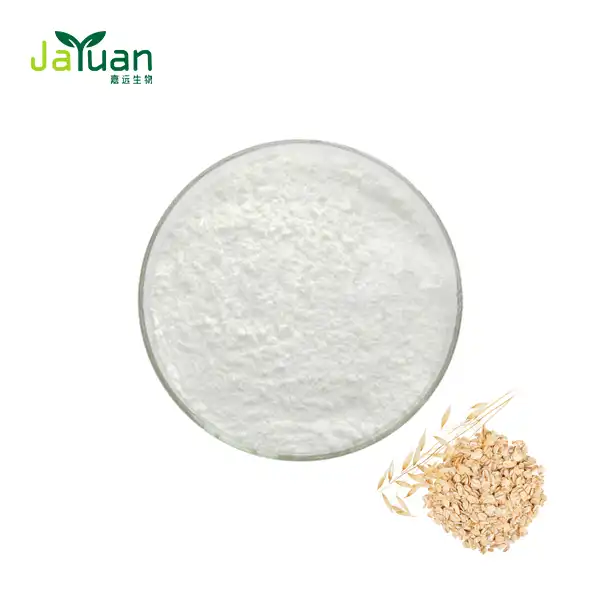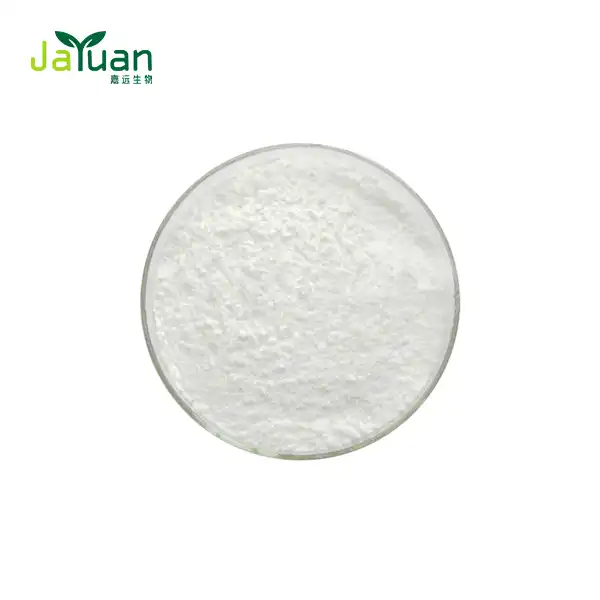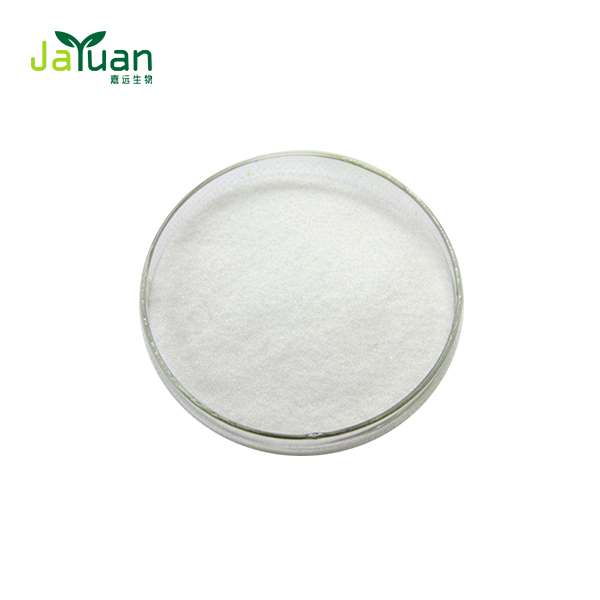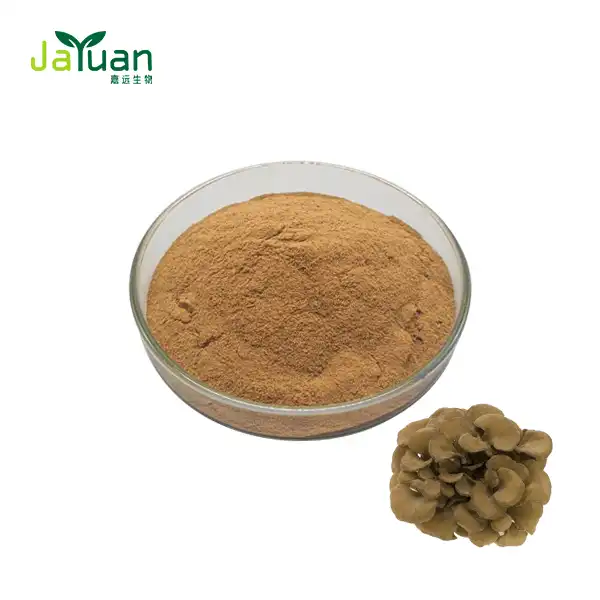Cytisine's Mechanism of Action on Nicotinic Receptors
Cytisine, a plant-based alkaloid, has gained significant attention in recent years for its potential role in smoking cessation. This natural compound, found in the seeds of the golden rain tree (Laburnum anagyroides), has been used for decades in Eastern Europe as an aid to quit smoking. But what makes the product so effective? Let's delve into the fascinating world of neuroscience and explore how the product interacts with nicotinic receptors in the brain.

Product Name: Cytisine
CAS NO.: 485-35-8
Molecular formula: C11H14N20
Molecular weight: 190.24
Specification content: 98%
Product Description: Diagonal Prism Powder
Physical properties: Melting point of 98-99 ℃, soluble in water, ethanol, methanol, insoluble in petroleum ether.
Detection method: HPLC
MOQ: 500gG-1KG
Customized service: Support adjusting purity (95% -99%) according to customer needs
Payment: 100% TT in advance
Certificaions: FSSC2000/ISO2000/HALAL/KOSHER/HACCP
Delivery terms: FedEx, DHL, EMS, UPS, TNT, all kinds of the airline, international shipping companies.
Free sample is available.
We do not sell retail quantities to individuals.
China's high-quality Cytisine supplier has good price advantages, high annual production capacity and stable quality. We also have our own production base and excellent cost control solutions.
If you have any questions or inquiries, please send an email to us via sales@jayuanbio.com and sales1@jayuanbio.com for more details! We'll try our best to give you a better service.
Looking forward to your feedback!
Your prompt reply would be greatly appreciated!
Binding Affinity: Cytisine vs. Nicotine
At the heart of its effectiveness lies its unique binding affinity to nicotinic acetylcholine receptors (nAChRs). These receptors play a crucial role in the brain's reward system and are the primary targets for nicotine, the addictive substance in tobacco.
Molecular Mimicry: The Key to Success
Its molecular structure bears a striking resemblance to nicotine, allowing it to bind to the same receptors. However, the way that it interacts with these receptors is subtly different, and this difference is what makes it a powerful tool for smoking cessation.
When nicotine binds to nAChRs, it triggers a flood of dopamine, the brain's "feel-good" neurotransmitter. This surge of dopamine is what creates the pleasurable sensation smokers experience and contributes to the addictive nature of cigarettes. On the other hand, it binds to these receptors with high affinity but only partially activates them.
Partial Agonism: The Goldilocks Effect
It acts as a partial agonist at nAChRs. This means it stimulates the receptors to a lesser degree than nicotine, resulting in a more modest release of dopamine. This partial activation is often described as the "Goldilocks effect" - not too much, not too little, but just right.
By providing some stimulation to the receptors, the product helps alleviate cravings and withdrawal symptoms. However, because it doesn't fully activate the receptors, it doesn't produce the intense pleasure associated with smoking, making it easier for individuals to break the habit.
Selective Targeting
One of the most intriguing aspects of its mechanism of action is its selectivity for specific subtypes of nicotinic receptors. This selective targeting contributes to its effectiveness and potentially favorable side effect profile.
Subtype Specificity: Precision in Action
Nicotinic receptors come in various subtypes, each with different distributions throughout the body and distinct roles in physiological processes. The product shows a particular affinity for the α4β2 subtype of nAChRs, which are abundantly expressed in the brain regions associated with nicotine addiction.
This selectivity is crucial because it allows it to focus its effects on the areas most relevant to smoking cessation while potentially minimizing interactions with other receptor subtypes that could lead to unwanted side effects.
Competitive Inhibition: Blocking Nicotine's Effects
Another important aspect of its mechanism is its ability to act as a competitive inhibitor of nicotine. When an individual taking it smokes a cigarette, the molecules of it already occupying the nicotinic receptors prevent nicotine from binding and exerting its full effect.
This competitive inhibition serves two purposes:
- It reduces the pleasurable sensations associated with smoking, making cigarettes less rewarding.
- It helps protect against relapse by diminishing the impact of "slip-ups" during the quitting process.
Neuroplasticity: How It Rewires Cravings
Perhaps one of the most fascinating aspects of its action is its potential to induce neuroplasticity - the brain's ability to reorganize itself by forming new neural connections. This property may be key to its long-term effectiveness in smoking cessation.
Receptor Upregulation: A Temporary Hurdle
Chronic nicotine exposure leads to an increase in the number of nicotinic receptors in the brain, a phenomenon known as upregulation. This adaptation is thought to contribute to the intense cravings experienced by smokers when they try to quit.
The product initially interacts with these upregulated receptors, providing some relief from withdrawal symptoms. When considering cytisine supplier, you need to pay attention to the consistency and purity of the product. However, its partial agonist properties mean it doesn't maintain the high level of stimulation that nicotine does.
Receptor Normalization: The Path to Freedom
Over time, with continued use and abstinence from nicotine, the brain begins to normalize the number of nicotinic receptors. This process of receptor downregulation is a form of neuroplasticity that can help reduce cravings and make it easier to remain smoke-free in the long term.
Moreover, its influence on neuroplasticity may extend beyond receptor normalization. Some research suggests that it could promote the growth of new neurons and strengthen synaptic connections in brain regions associated with learning and memory. This could potentially help individuals develop new, healthier habits to replace smoking.
Behavioral Reinforcement: Breaking the Habit Loop
Its mechanism of action doesn't just work on a molecular level; it also helps break the behavioral aspects of smoking addiction. By reducing the rewarding effects of nicotine, it weakens the association between smoking and pleasure. This can make it easier for individuals to overcome the habitual aspects of smoking, such as the hand-to-mouth motion or the ritual of lighting up in certain situations.
As the brain adapts to the presence of the product and the absence of nicotine, new neural pathways can form, supporting smoke-free behaviors and reducing the automatic responses that often lead to relapse.
Conclusion
Cytisine's mechanism of action on nicotinic receptors represents a sophisticated and multifaceted approach to smoking cessation. When considering to purchase it, you need to pay attention to the product's purity and effectiveness. By combining high binding affinity, partial agonism, selective targeting, and the potential to promote neuroplasticity, the product offers a unique tool in the fight against tobacco addiction.
As research continues to unravel the intricate details of its effects on the brain, we may discover even more ways in which this remarkable compound can help individuals break free from the grip of nicotine addiction. The journey to a smoke-free life is never easy, but with tools like it, it becomes increasingly achievable for millions around the world.
If you're interested in learning more about it and its potential applications, don't hesitate to reach out. Our team at Jayuan Bio is committed to providing high-quality, natural plant extracts to support health and wellness. Contact us at sales@jayuanbio.com or sales1@jayuanbio.com for more information on our supplier services and how we can help you harness the power of this fascinating compound.
We at Jayuan Bio take pride in our dedication to innovation and quality. Thanks to our advanced facilities and skilled personnel, we guarantee that each batch of it conforms to the highest standards. It is essential to consider a manufacturer's capability of adhering to stringent production and quality control standards. Whether you are a researcher investigating new applications or a manufacturer in search of a dependable supplier, we possess the expertise and capability to fulfill your requirements. Seize the chance to collaborate with a pioneer in plant extracts—contact us today to learn how our top-quality products can aid your projects.
References
1. Hajek, P., et al. (2019). Efficacy of cytisine in helping smokers quit: systematic review and meta-analysis. Thorax, 74(11), 1037-1042.
2. Rollema, H., et al. (2010). Cytisine, a partial agonist at neuronal nicotinic acetylcholine receptors, has antidepressant-like activity in the rat forced swim test. Neuropharmacology, 58(1), 215-221.
3. Tutka, P., & Zatoński, W. (2006). Cytisine for the treatment of nicotine addiction: from a molecule to therapeutic efficacy. Pharmacological Reports, 58(6), 777-798.
4. Rouden, J., et al. (2014). The chemistry of cytisine, an alkaloid that can help to fight against tobacco addiction. European Journal of Organic Chemistry, 2014(31), 6823-6840.
5. Coe, J. W., et al. (2005). Varenicline: an α4β2 nicotinic receptor partial agonist for smoking cessation. Journal of Medicinal Chemistry, 48(10), 3474-3477.
6. Etter, J. F. (2006). Cytisine for smoking cessation: a literature review and a meta-analysis. Archives of Internal Medicine, 166(15), 1553-1559.








